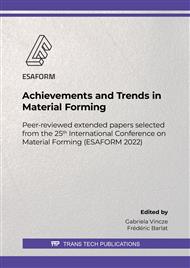p.1795
p.1802
p.1809
p.1821
p.1832
p.1842
p.1850
p.1864
p.1874
Observations of Polymer Foam Development during Rotational Moulding
Abstract:
Large scale buoyant structures typical of offshore wave energy generation devices may be produced using the rotational foam moulding process. Due to the challenging environmental conditions these parts experience during their lifetime at sea, it is important that the structures are optimised to ensure acceptable mechanical performance. Foams containing large cells suffer a reduction in mechanical properties; therefore, an optimal foam contains small, evenly sized, and well distributed bubbles in large numbers. Due to the lower pressures used in the process, this can be challenging to achieve. Careful selection of material and processing conditions is required to achieve an optimal structure. A unique bench-based rig was used to observe developing foam structures. A camera was used to record the foam height change at intervals. Foam height change was obtained using digital image analysis. Several parameters were studied such as the polymer particle size or the mould pressure for example. In addition to the foam height change, foam density were analysed. It is found that mould pressure, polymer particle size, chemical blowing agent concentration, and polymer rheology may be used to control the foamed structures.
Info:
Periodical:
Pages:
1832-1841
Citation:
Online since:
July 2022
Authors:
Keywords:
Permissions:
Share:
Citation:


